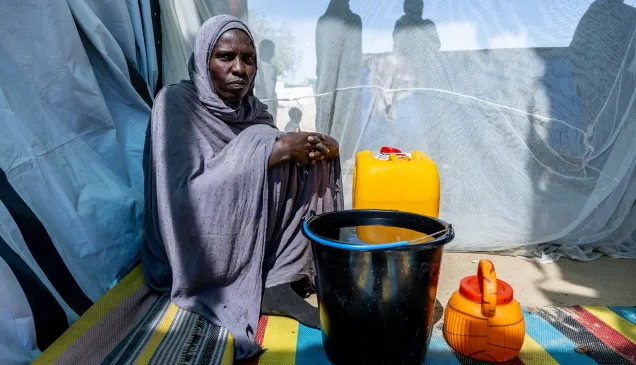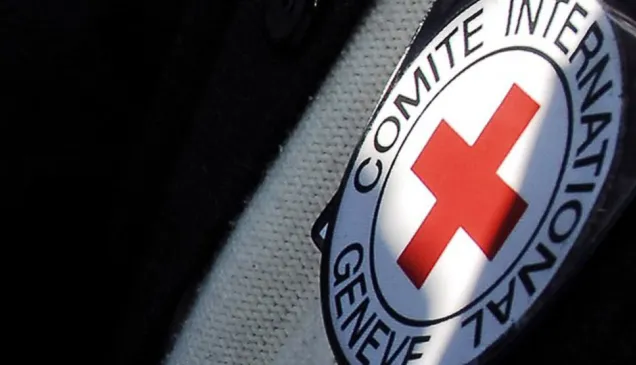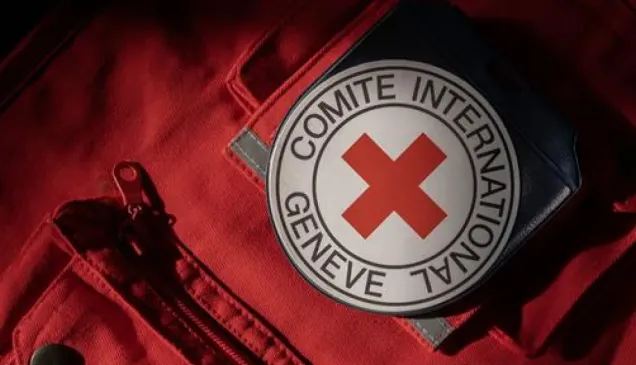Speech given by Ms Christine Beerli, Vice-President of the ICRC, 22 April 2015, Ypres, Belgium
I am glad to be here with you today. We are here not only to commemorate the horrific use of chlorine gas around Ypres one hundred years ago. We are also here to look back on the journey the international community has since embarked on. And we are here to remember that we have not yet reached the goal of our journey: to abolish all use of, and completely eliminate, weapons of mass destruction; in law, and in practice.
Looking back at the history of international humanitarian law, it seems that the greatest atrocities, the greatest human catastrophes often lead to the broadest legislation. It was the overwhelming suffering of dying soldiers in the battlefields of Solferino over 150 years ago which prompted Henri Dunant to create the International Committee of the Red Cross, and through it the 1864 Geneva Convention. Similarly, the 1949 Geneva Conventions, and in particular the Fourth Geneva Convention, which was the first treaty to establish detailed rules to protect civilians in armed conflict – were responding to the atrocities of the Second World War. And in between, it was the attack right here, one hundred years ago, poisoning soldiers with chlorine gas, which led to the creation of the 1925 Geneva Protocol, strengthening existing international legislation by prohibiting the use of chemical and biological weapons in warfare. I am proud to say that the ICRC played an important role in the Geneva Protocol, not least through its 1918 appeal. Regrettably, the words of this appeal remain acutely fitting:
We protest with all the strength of our being against this method of warfare, which we can only describe as criminal.
It seems that humanity sometimes needs the unimaginable to happen, to prevent it from happening again. And so while we commemorate the events of a century ago, we must not forget our duty to the people who died and suffered, and our duty to those alive today.
The challenge of our times is not only the creation of legal frameworks where there are none; it is ensuring that those which are in place are respected. In 1918, soldiers unlocked 6,000 gas cylinders and used the wind towards enemy lines as a means of distribution of the deadly chlorine mixture. And yet in 2013 and 2014, despite the outright prohibition of these weapons now strengthened by the 1993 Chemical Weapons Convention, people in Syria have again borne the horrendous cost of attacks with deadly nerve agents and chlorine gas. Not only the same category of weapons, but even the same toxic substance as one hundred years ago. And it is now reported that just last month, in Idlib, Syria, chlorine gas was once more used. Now we could think that the legal prohibition has disappointed, that every violation of the law means complete failure. On the contrary: the strength of any norm is tested in the breach, by how the international community reacts to violations. The broad condemnation of the shocking use of chemical weapons, in August 2013, and in the past weeks, indeed confirm the universal necessity of the prohibition of chemical weapons.
The ICRC opposes the use of poison under any circumstances. And for this reason, acutely aware of the continuing interest among some States in the development of new toxic weaponry, we also issued a public call to prevent the use of toxic chemicals as weapons for law enforcement (in February 2013).
Yet our task is much greater than solely upholding the absolute prohibition of use of chemical weapons under international humanitarian law. We must consider the grave dangers from all weapons of mass destruction.
International humanitarian law imposes strict rules on the choice of means and methods of warfare. Weapons must not harm civilians through indiscriminate effects. They must not be of a nature to cause superfluous injury or unnecessary suffering to combatants. Weapons of mass destruction do not comply with these rules. The human suffering they create is not tolerable and the humanitarian consequences are not acceptable. This is the lesson we learned from Ypres. This is the duty Ypres left us with.
Another – already prohibited – means of warfare that has the potential to raise the specter of mass destruction are biological weapons. It is important to recall that many major powers pursued extensive efforts to harness the destructive power of disease for military purposes from the late 1930's through to the late 1960's. And some countries even continued to develop such weapons after the agreement of the Biological and Toxin Weapons Convention in 1972.
Luckily – one might say – the use of biological weapons in armed conflict has been limited, but such military programs were not without their victims, including many civilians, and people exposed to infectious substances as part of military research programs.
The potential danger from the intentional spread of disease is only too clearly demonstrated by the widespread damage inflicted by naturally occurring infectious disease outbreaks, particularly in regions where healthcare facilities are under strain. There is a frighteningly real possibility that advances in science and technology could offer even greater opportunities for those who would seek to misuse biology in future.
I would like to turn to a different kind of weapons of mass destruction, one for which we still do not have an adequate legal ban: nuclear weapons. The International Red Cross and Red Crescent Movement has long been concerned about nuclear weapons. ICRC delegates witnessed the impact that these weapons had on the people of Hiroshima and Nagasaki in 1945. Already in September of that year the ICRC publicly voiced the necessity that nuclear weapons be banned. From 1948 on, the entire International Red Cross and Red Crescent Movement, through its International Conferences, called for the prohibition of weapons of mass destruction in general, and of nuclear weapons in particular. We maintain this call to this day.
We hope that the upcoming Review Conference for the Treaty on the Non-proliferation of Nuclear Weapons will be a turning point for progress in this area. Now is the time to act with urgency and determination to bring the era of nuclear weapons to an end. If we wait for a nuclear catastrophe to happen, there might not be anyone left to draw lessons from it.
Given past development of chemical, biological and nuclear weapons, we must remain alert to any new weapons of mass destruction that might emerge from the terrible marriage of warfare and science. In 2002 already, the ICRC appealed to political and military authorities to strengthen their commitment to international humanitarian law norms which prohibit the hostile uses of biological agents and to work together to subject potentially dangerous biotechnology to effective controls.
But while seeking to prevent future horrors we must reserve sufficient energy to tackle the humanitarian consequences we are witnessing today that are a direct result of the use and misuse of weapons. If we measure destruction in terms of the real human cost then perhaps the most effective weapons of mass destruction are hiding in plain sight.
Conventional rockets, bombs, and missiles – particularly those with large explosive power, those with a wide area of impact, and those that are unguided – are responsible for the overwhelming majority of civilian deaths in today's conflicts. This is especially marked since the shift from the open battlefields of the past to today's conflicts in the densely populated areas of the world's towns and cities.
It is for this reason that the ICRC is putting renewed emphasis on concerns about the use of explosive weapons, particularly in densely populated areas.
We recognize and commend the great achievements in legally limiting the use of or eliminating indiscriminate and inhumane means of warfare. But we still have a great deal of work to do in ensuring these legal frameworks are respected, everywhere.
I would like to conclude by recalling the strict constraints of international law on weapons of mass destruction. There must be no doubt that the prohibitions of use of chemical and biological weapons are absolute. They are part of customary international humanitarian law, which applies to all parties to all armed conflicts anywhere in the world.
As for nuclear weapons, we must be clear that that it is difficult to envisage how any use of these weapons could be compatible with the general rules of international humanitarian law, not to mention the principles of humanity and the dictates of public conscience.
But our duty goes beyond expanding and solidifying the legal frameworks limiting the use of weapons of mass destruction. The unambiguous law must be translated into equally clear actions, by States, their armies, and by non-State armed groups, to comply with these legal frameworks.
The legal prohibition of the gas which killed thousands of soldiers and civilians here one hundred years ago did not prevent the attacks with the same substance during our times. It is therefore our duty to work not only for the law to exist, but also for it to be understood, to be accepted, and to be respected.
The historic injustice done in this place imposes this duty upon us.



